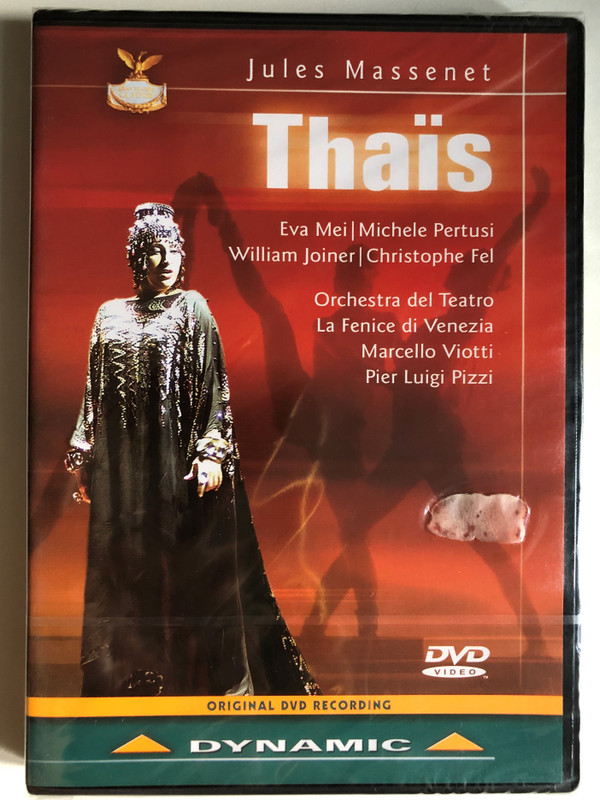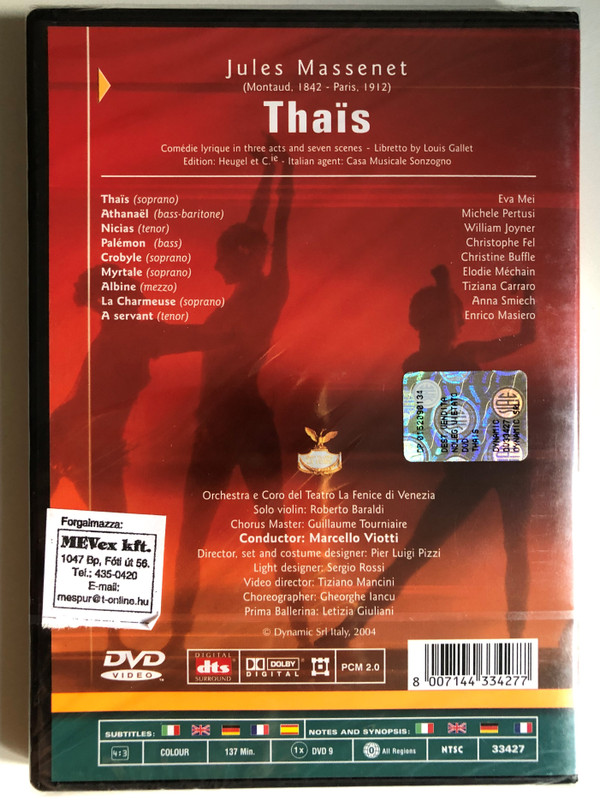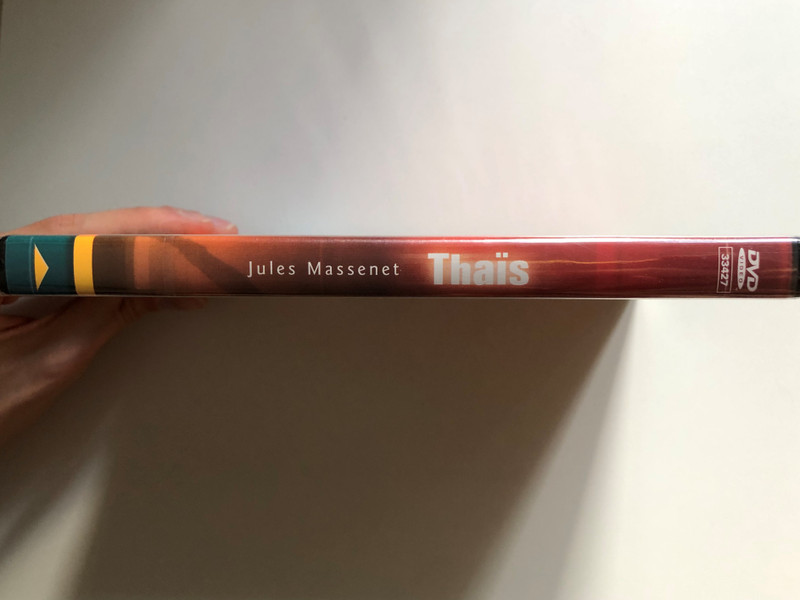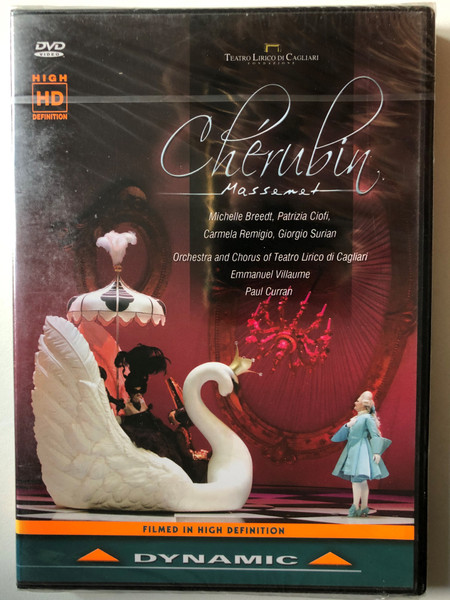Description
Jules Massenet: Thais (Méditation) / Lyrical comedy in three acts and seven scenes - Libretto by Louis Gallet / Orchestra and Chorus of the Teatro La Fenice in Venice / Conductor: Marcello Viotti Chorus Master: Guillaume Tourniaire / DVD
Format: NTSC
Run time: 137 Minutes
UPC: 8007144334277
- Aspect Ratio : 1.33:1
- Is Discontinued By Manufacturer : Yes
- MPAA rating : Unrated (Not Rated)
- Package Dimensions : 7.1 x 5.42 x 0.58 inches; 5.43 Ounces
- Director : Pier Luigi Pizzi
- Media Format : Multiple Formats, Classical, NTSC
- Run time : 2 hours and 17 minutes
- Release date : June 29, 2004
- Subtitles: : German, English, Italian, Spanish, French
- Studio : Dynamic
- Number of discs : 1
The Méditation is an instrumental entr'acte performed between the scenes of Act II in the opera Thaïs; a wordless chorus joins in for the last reprise. In the first scene of Act II, Athanaël, a Cenobite monk, confronts Thaïs, a beautiful and hedonistic courtesan and devotée of Venus, and attempts to persuade her to leave her life of luxury and pleasure and find salvation through God. It is during a time of reflection following the encounter that the Méditation occurs. In the second scene of Act II, following the Méditation, Thaïs tells Athanaël that she let him take her to a cloister near the desert.
Ernest Newman commented that the "solo is almost invariably made far more sickly than it need be or should be", continuing "What concern of [the violinist] is dramatic psychology ?", and that the piece sometimes becomes "not merely saccharine but maudlin". He noted that the themes have already been heard; Rodney Milnes identifies that the music "derives both from Athanaël's erotic visions and part of his hymn".
The piece is in D major and is approximately five to six minutes long. Massenet may also have written the piece with religious intentions; the tempo marking is Andante religioso, signifying his intention that it should be played religiously (which could mean either strictly in the tempo or literally with religiously-founded emotion) and at walking tempo, or around 60 BPM. The piece opens with a short introduction by the harps, with the solo violin quickly entering with the motif. After the violin plays the melody twice, the piece goes into a section marked animato, gradually becoming more and more passionate (Massenet wrote poco a poco appassionato). The climax is reached at a place marked poco piu appassionato (a little more passion) and is then followed by a short cadenza-like passage from the soloist and returns to the main theme. After the theme is played twice, the soloist joins the orchestra while playing harmonics on the upper register as the harps and strings quietly play below the solo line.



















